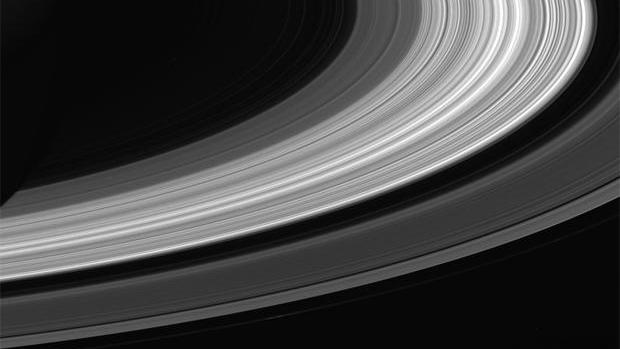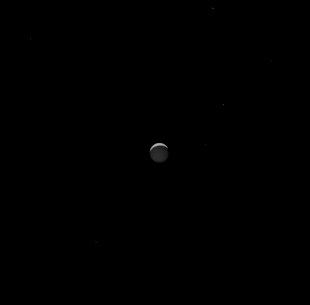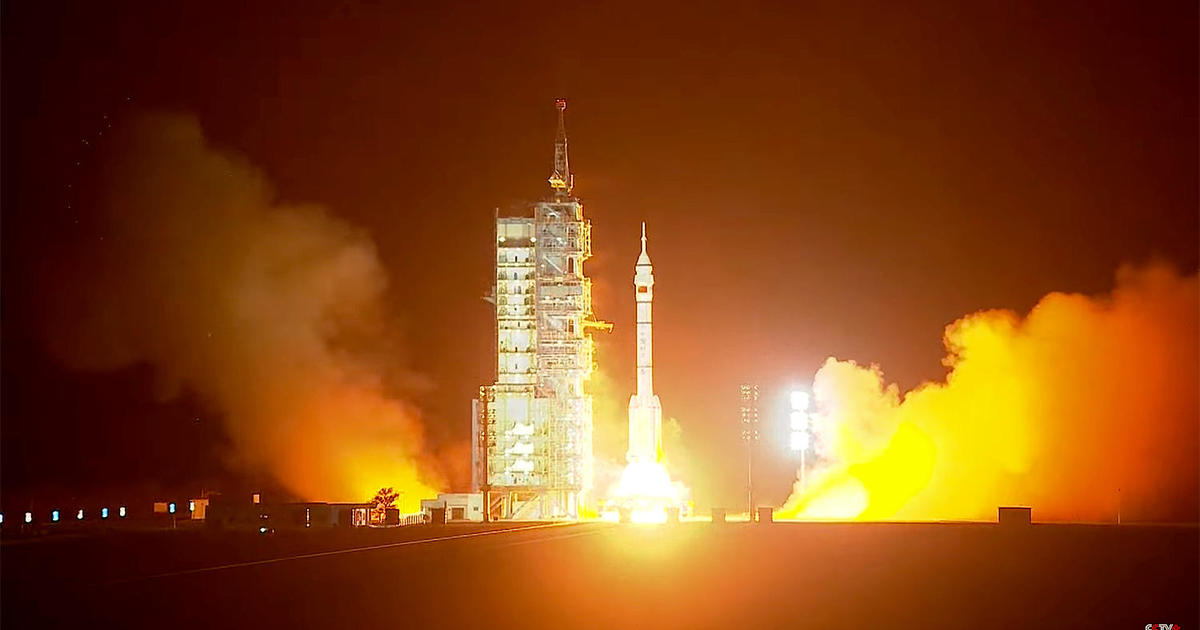Cassini's grand finale on Saturn ends NASA's "13-year marathon of scientific discovery"
Dutifully beaming back data to the very end, NASA's long-lived Cassini probe slammed into Saturn's atmosphere at some 77,000 mph Friday, blazing like a shooting star as it was ripped apart and incinerated in the final chapter of an enormously successful mission.
Thirteen years after braking into orbit around Saturn, the end came at 6:32 a.m. EDT, about one minute after the spacecraft plunged into the thin-but-discernible extreme upper atmosphere some 1,190 miles above Saturn's cloud tops.
"This morning, a lone explorer, a machine made by humankind, finished its mission 900 million miles away," said Earl Maize, the Cassini project manager at the Jet Propulsion Laboratory.
"The nearest observer wouldn't even know until 84 minutes later that Cassini was gone. To the very end, the spacecraft did everything we asked. We believe we got every last second of data."
He described Cassini as "a superb machine in an amazing place, doing everything we could possibly do to reveal the mysteries and secrets of our solar system."
Up until the final moments, Cassini's flight computer attempted to maintain the probe's orientation, firing its thrusters as buffeting built up to keep the spacecraft's big dish antenna pointed at Earth so it could transmit a final trove of data.
But the thrusters were quickly overwhelmed, the spacecraft lost lock on Earth and began tumbling, according to pre-impact calculations, quickly heating up, breaking apart and melting to vapor, its constituents spreading out and merging with the atmosphere of the planet it spent its life exploring.
Cassini's final bits of data, traveling at the speed of light -- 186,000 miles per second -- took 83-and-a-half minutes to cross the 932 million miles to Earth, reaching NASA's 230-foot-wide Deep Space Network antenna near Canberra, Australia, at 7:55:46 a.m., about 30 seconds later than predicted.
At that point, Cassini's telemetry stream suddenly stopped, confirmation Cassini had met its fiery demise as expected.
"As you just heard, the signal from the spacecraft is gone and within the next 45 seconds, so will be the spacecraft," Maize told the flight control team.
"I hope you're all deeply proud of this amazing accomplishment. Congratulations to you all. This has been an incredible mission, an incredible spacecraft and you're all an incredible team. I'm going to call this the end of mission."
Then, for the last time, Maize said "project manager off the net," and took off his headset.
Flight controllers stood up from their computer displays, hugged and cheered along with more than 1,500 scientists, engineers, managers, friends and family members gathered at JPL to share Cassini's final moments.
Linda Spilker, the Cassini project scientist, said the mission represented "a 13-year marathon of scientific discovery. And this last orbit was just the last lap."
"So we stood in celebration of successfully completing the race," she said during a post-impact briefing. "I know I stood there with a mixture of applause and tears because it felt so much like losing a friend. And yet looking ahead ... there's so much incredible science left to figure out and understand, decades worth, science that will span a generation."
Launched in October 1997, Cassini arrived at Saturn in July 2004, the first spacecraft to observe the ringed planet from orbit. The following January, Cassini dropped off a lander built by the European Space Agency that successfully completed a parachute descent to the surface of the large moon Titan, revealing an alien landscape beneath a thick, smog-like atmosphere.
Cassini's cloud-piercing radar imaging system eventually mapped the moon, revealing networks of rivers, lakes and seas flowing with liquid methane.
"To put a probe onto Titan, capture a signal on the way down, land it softly on the surface and play those images back, I still give myself goosebumps just seeing that first image," Maize said earlier. "I'll never forget it."
Cassini went on to orbit Saturn 294 times, repeatedly using Titan's gravity to alter its trajectory, setting up flybys of multiple moons and giving the spacecraft different perspectives on Saturn and its vast ring system as its seasons slowly changed.
Over the course of its 13-year mission, Cassini executed 2.5 million commands, carried out 360 engine burns, completed 162 targeted flybys of Saturn's moons, took more than 453,000 images and discovered six previously unknown moons, covering 4.9 billion miles since launch in 1997.
Most important, the spacecraft collected 635 gigabits of data resulting in nearly 4,000 peer-reviewed scientific papers.
"There are times in this world when things just line up, when everything is just about perfect -- a child's laugh, a desert sunset, and this morning," Maize said during the final Cassini news briefing. "It just couldn't have been better. Everything clicked out just right."
The decision to crash Cassini into Saturn was made seven years ago, the result of the spacecraft's own discoveries.
Saturn's moon Enceladus is now known to harbor a saltwater ocean beneath an icy crust, with hydrothermal vents on the seafloor and jets of water ice and vapor spewing into space from cracks in the crust near the south pole.
Cassini flew through the plumes and detected organic compounds, indicating the tiny moon could, in theory, harbor a habitable environment and, possibly, life beneath its relatively thin crust -- an unexpected discovery that ranks among Cassini's major achievements.
Flight controllers knew Cassini would eventually run out of gas and would no longer be controllable. To eliminate any chance of an inadvertent collision that could contaminate Enceladus with Earthly debris and possible microbes, mission managers came up with a daring end-of-mission scenario.
Rather than use up Cassini's remaining propellant to boost it into a remote orbit, bringing close-range observations to an end, the spacecraft was directed to fly by Saturn's large moon Titan in April, using the moon's gravity to put it on a trajectory that repeatedly carried it between Saturn's cloud tops and its innermost rings.
The spacecraft made 22 such orbits before a final nudge by Titan earlier this week -- the "goodbye kiss" -- that put Cassini on course for impact Friday.
"The Cassini mission ended this morning, high over the clouds of Saturn, the spacecraft is gone," Maize said. "Thanks and farewell, faithful explorer! But the legacy of Cassini has just begun. The effect that Cassini has, and will have, on the future of planetary exploration will go on for decades. Thank you, and long live Cassini."







